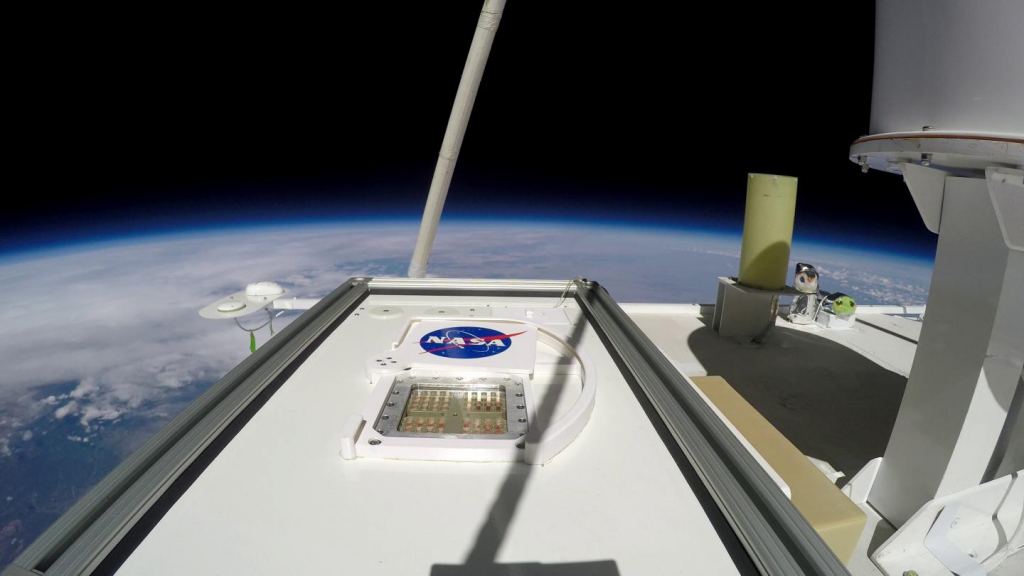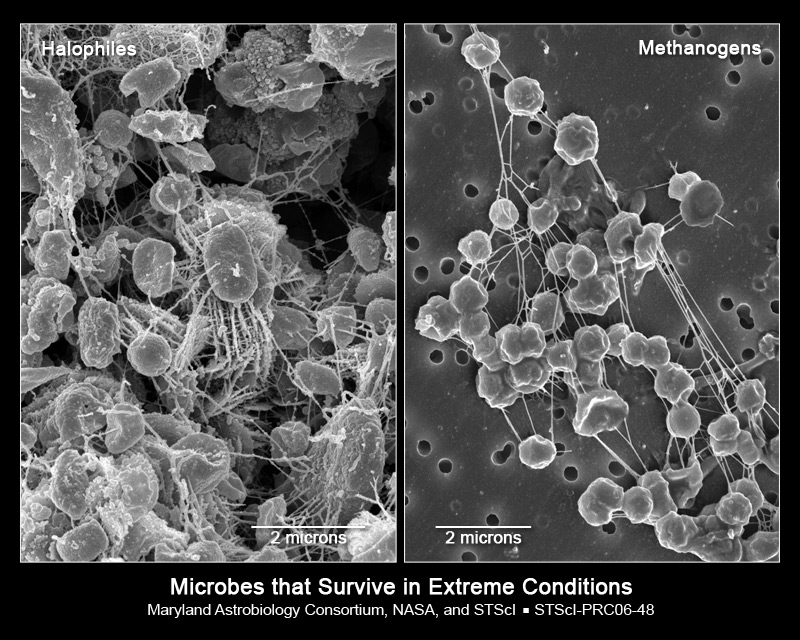Mars’ surface is a harsh environment for life. But life on Earth is notoriously resilient as well. No one is quite sure yet how microbes from Earth would fare on the Martian surface. However, the impact of a potential transmigration of microbes to the red planet could be immense. Not only could it skew any findings of potential real Martian life we might find, it could also completely disrupt any nascent biosphere that Mars might have.
To understand whether that much disruption is really possible, first we must understand whether any Earthly life can survive on Mars itself. According to a new study recently published in Frontiers in Microbiology, the answer to that is yes.
The research, led by a team of scientists at NASA and the German Aerospace Center, used a unique approach to test the viability of live bacteria on the Martian surface. They sent it up to the stratosphere in a balloon.
The stratosphere is a surprisingly similar environment to the Martian surface, specifically in terms of radiation and temperature. The researchers introduced bacteria to that environment using a tool called the Microbes in Atmosphere for Radiation, Survival, and Biological Outcomes experiment (MARSBOx).

Credit: NASA
MARSBOx allowed the researchers to maintain a pressure similar to that of the Martian atmosphere as well as exposing them to a mixture of gas that was remarkably similar to the actual atmospheric makeup on Mars. The pressure, temperature, radiation, and gaseous contents of the box all provide a decent simulacra of what conditions would be like on the Martian surface. As one added control, the researchers designed the box to contain two separate chambers, including a shielded one that would allow them to isolate the effects of radiation on the microbes.
Of the various microbes, including both bacteria and fungi, that were introduced to the environment, only a few survived. Black mold fungus seemed to do particularly well in the harsh environment. That did not particularly surprise the scientists, as that hardy fungi had been seen previously happily residing on the International Space Station.

Credit: NASA
Despite its ability to exist in the freezing temperatures and high radiation environment of the stratosphere, even the black mold fungus had to be “revived” once it was safely back on the ground. It is not yet clear what, if anything, could induce that revival on the actual surface of Mars.
If scientists are in fact able to figure out how to leverage microbes effectively on other worlds, it could be a huge potential boon as well as a cause for concern. Bacteria and other microbes are necessary to human’s biological functions. They also provide access to biochemical processes that would otherwise be unobtainable in the cold, sterile environment of the red planet.

Credit: Maryland Astrobiological Consortium, NASA, STSci
This preliminary study shows how important it is for us to better understand the survival capabilities of the microbes on our own world. If used correctly, they could prove a huge boon for space travel. However, if used incorrectly, they could destroy any chance we have of understanding biogenesis on other worlds.
Learn More:
NASA – Life from Earth could temporarily survive on Mars
UT – Using bacteria to build a base on Mars
UT – If There’s Subsurface Water Across Mars, Where is it Safe to Land to Avoid Contamination?
SciTechDaily – Study Shows Life From Earth Could Temporarily Survive on Mars
Frontiers in Microbiology – MARSBOx: Fungal and Bacterial Endurance From a Balloon-Flown Analog Mission in the Stratosphere
Lead Image:
The MARSBOx being prepared for launch at the Germany Aerospace Center.
Credit: DLR

